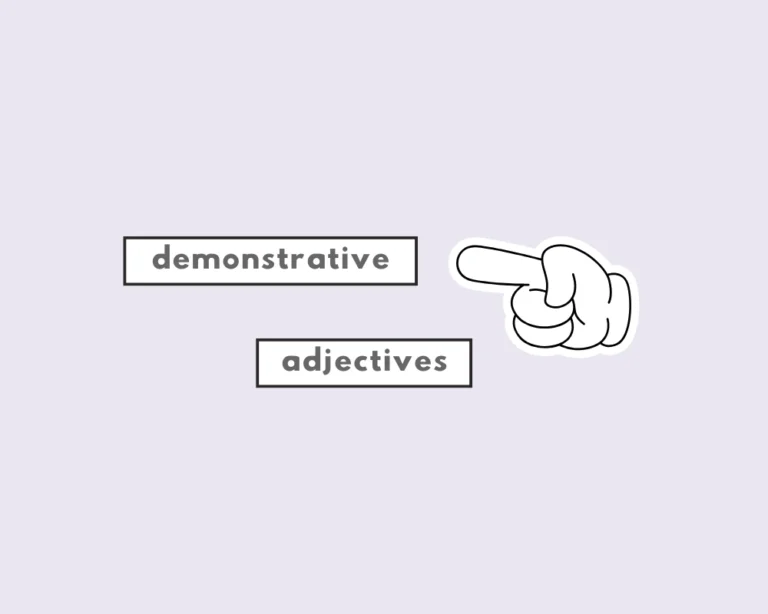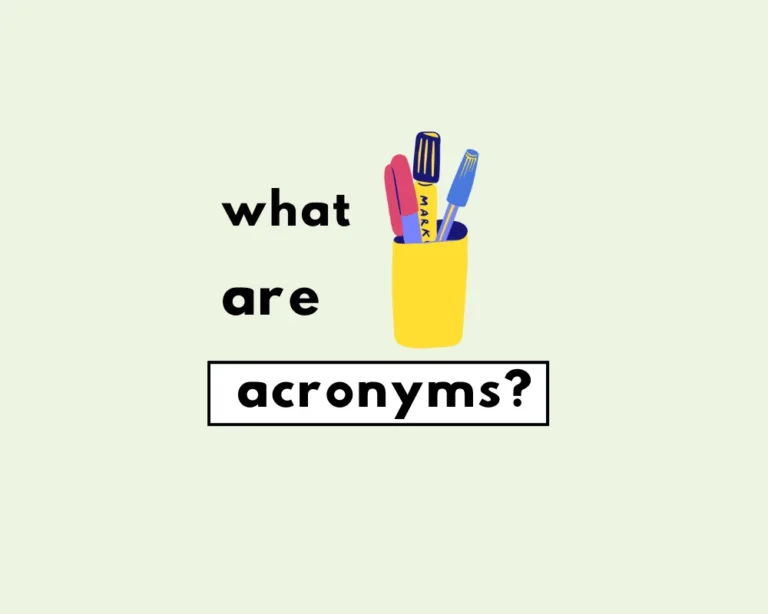What are verbs? (explained + examples)
Verbs are action words, and they’re a principal part of speech that make up half of each sentence. We could say they’re where all the action’s at (literally).
She understands the concept completely.
She is understanding the concept completely.
Verbs describe what we do, and are debatably the most important words because they tell us what is actually going on in any given sentence. Let’s explore the main types of verbs in the sections below.
To learn all about their correct usage, keep reading this guide that details everything you need to know about the inimitable verb (i.e., word).
How we use verbs (usage + examples)
To say it simply, but also at a very broad level: verbs say something about a person or thing. They express what someone or something does, as in:
- Ashley laughs.
- The whistle blows.
What is done to someone or something:
- The window’s broken.
- Henry’s been suspended.
They quite literally say what something is, or its condition:
- The fish died.
- Babies are delicate.
- I feel grateful.
Sentences often include more than one verb:
- My mother is visiting.
- I’ve burnt the toast.
Types of verbs
The main types of verbs fall into the following subtypes:
- action and stative
- transitive and intransitive
- linking verbs (or auxiliaries)
- modals
- regular and irregular
- phrasals
- infinitives
- participles (past and present)
Action/stative verbs (explained, with examples)
Action or stative verbs describe actions, which can be physical or mental. Thinking, for example, is an action verb, though it may appear action-less from the outside. Likewise, sitting, sleeping, reading, and typing are all actions; and to that extent, they’re also action verbs.
| Timmy kicks the ball. |
| Ashley rides the horse. |
| I work at a restaurant. |
Stative verbs depict states of being, thoughts, or conditions:
- Thoughts and opinions: agree, believe, doubt, guess, imagine, know.
- Feelings and emotions: dislike, hate, like, love, prefer, want, wish
- Senses and perceptions: appear, be, feel, hear, look, see, seem, smell, taste
- Possession and measurement: belong, have, measure, own, possess, weigh.
| The dog is dead. |
| My bones are brittle. |
| I dislike coffee. |
Transitive vs. intransitive
Transitives are those with one or more sentence objects:
| Transitive | Intransitive |
|---|---|
| Sam bought a bouquet of flowers for his mother. | She is sleeping right now. |
| Ashley rides the train each morning. | Sarah laughs quietly. |
| Ben gives lessons on English grammar. | They fought fiercely. |
In both sentences, the subject performs an action that is received by something. Whatever receives the action in a sentence is the sentence object.
In the first sentence, the ball is kicked by Timmy; therefore, the ball is the object: it receives the action of the subject. In the second sentence, the horse is ridden by Ashley. This makes the horse the direct object, and rides a transitive verb (along with kicks).
A way to remember is that transitive verbs are transferring: they move from the doer to the receiver (person or thing), and can use one or more objects.
Intransitive vs. transitive
Verbs used intransitively do not use sentence objects. As the action does not have a receiver, it ends with the doer (it’s not done to someone or something, rather it occurs within oneself).
Certain verbs are strictly intransitive (e.g. sleeping, laughing, thinking, falling). Others can be both transitive and intransitive: fighting, riding, reading, and so on.
For Stative verbs, remember “state” implies unchanging; so, these verbs (like “own” or “understand”) usually aren’t used in continuous tenses.
Linking verbs (or copulas)
Linking verbs, also known as copulas (from the Latin, “uniting, serving to couple”) are a kind of stative verb that links subjects with their subject complement. They do not show actions so much as depict their subjects:
| Linking Verb Examples |
|---|
| The travelers became sleepy. |
| That gold necklace looks expensive. |
| Suddenly, the store got very busy. |
Helping verbs (or auxiliary verbs)
Helping verbs, or auxiliaries work with the sentence’s main verb to convey time or modes of being. Auxiliaries cannot stand on their own and must be paired with a main verb to make sense. Be and have are the primary auxiliaries:
| Auxiliary Verb Examples |
|---|
| Matt is using the computer. |
| She couldn’t decide whether she wanted to go out or not. |
| These books are sold in supermarkets. |
Modal auxiliary verbs
Modal verbs (also known as modals) are a type of auxiliary or helping verb that show ‘possibility, ability, intent, or necessity.’ Since modals help, they usually pair with main verbs in sentences and emphasize the meaning. Examples of common modals are can, may, might, could, should, would, will, must.
| Modal Verb Examples |
|---|
| I could do a handstand when I was a kid. |
| Will you turn that music down? |
| That guy should wear less cologne. |
Regular & irregular
Regular verbs end in -ed when modified to past tense; such as walk/walked, climb/climbed. All other verb endings are irregular in the past tense.
| Regular | Irregular |
|---|---|
| She performed in the play. | Harry ran as fast as he could. |
| He decided to walk to school. | Our kids have all grown up. |
| Sam looked past the employer’s shortcomings. | We told you to wait before you had dessert. |
Irregular verbs are the opposite of regular verbs (as you might have guessed) and do not take on the usual –d, -ed, or -ied spelling patterns of the past simple or past participle.
Phrasals & infinitives
A phrasal combines verbs with an adverb or a preposition to create verbal phrases—i.e., the phrasal verb.
| Phrasal Verb Examples |
|---|
| My friend is the only one who backed me up. |
| The ice cream machine at McDonald’s is always breaking down. |
| Sam called around to find a nearby mechanic. |
Infinitives function in sentences as a noun, adjective, or adverb. Most infinitives are formed by adding the preposition to before the base verb: “I want to go home.”
| Infinitive Examples |
|---|
| To do well in college, one must study diligently. |
| Wherever I go, I always bring a book to read in case I get bored. |
| Sally left the camping trip early to recover from poison ivy. |
Learn more about grammar
| Kinds of verbs | What’s the past tense of …? |
|---|---|
| forms of ‘to be’ | … seek? |
| auxiliary verbs | … teach? |
| present tense | … catch? |
| future tense | … buy? |
| past tense | … read? |
| perfect tense | … ring? |
| transitive vs. intransitive | … drive? |
| participles | … throw? |
| irregular verbs | … lead? |
| modals | … win? |
Worksheet
Based on the usage notes in the blog post, how are stative verbs generally used regarding continuous tenses?
According to the post, which type of verb is defined as having one or more sentence objects?
Which of the following words is listed in the post as a stative verb depicting feelings or emotions?
Based on the usage notes provided, which sentence correctly uses a stative verb?

English Idioms and Phrases Starting With “B”


This or That (How to Use Demonstrative Adjectives)

A List of Common Acronyms in English You Should Know

What’s the Plural of Tornado?

What’s the Plural of Zero?

What’s the Plural of Erratum?

What’s the Plural of Cliff? Cliff or Cliffs?

What’s the Past Tense of Bet? Bet or Betted?
Functional Always active
Preferences
Statistics
Marketing
To provide the best experiences, we and our partners use technologies like cookies to store and/or access device information. Consenting to these technologies will allow us and our partners to process personal data such as browsing behavior or unique IDs on this site and show (non-) personalized ads. Not consenting or withdrawing consent, may adversely affect certain features and functions.
Click below to consent to the above or make granular choices. Your choices will be applied to this site only. You can change your settings at any time, including withdrawing your consent, by using the toggles on the Cookie Policy, or by clicking on the manage consent button at the bottom of the screen.


